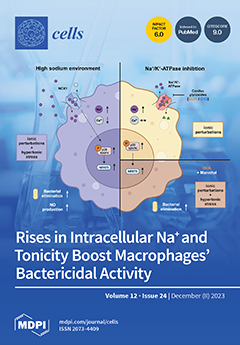Therapy via the gene addition of the anti-sickling β
AS3-globin transgene is potentially curative for all β-hemoglobinopathies and therefore of particular clinical and commercial interest. This study investigates GLOBE-based lentiviral vectors (LVs) for β
AS3-globin addition and evaluates strategies for an
[...] Read more.
Therapy via the gene addition of the anti-sickling β
AS3-globin transgene is potentially curative for all β-hemoglobinopathies and therefore of particular clinical and commercial interest. This study investigates GLOBE-based lentiviral vectors (LVs) for β
AS3-globin addition and evaluates strategies for an increased β-like globin expression without vector dose escalation. First, we report the development of a GLOBE-derived LV, GLV2-βAS3, which, compared to its parental vector, adds anti-sickling action and a transcription-enhancing 848-bp transcription terminator element, retains high vector titers and allows for superior β-like globin expression in primary patient-derived hematopoietic stem and progenitor cells (HSPCs). Second, prompted by our previous correction of
HBBIVSI−110(G>A) thalassemia based on RNApol(III)-driven shRNAs in mono- and combination therapy, we analyzed a series of novel LVs for the RNApol(II)-driven constitutive or late-erythroid expression of
HBBIVSI−110(G>A)-specific miRNA30-embedded shRNAs (shRNAmiR). This included bifunctional LVs, allowing for concurrent β
AS3-globin expression. LVs were initially compared for their ability to achieve high β-like globin expression in
HBBIVSI−110(G>A)-transgenic cells, before the evaluation of shortlisted candidate LVs in
HBBIVSI−110(G>A)-homozygous HSPCs. The latter revealed that β-globin promoter-driven designs for monotherapy with
HBBIVSI−110(G>A)-specific shRNAmiRs only marginally increased β-globin levels compared to untransduced cells, whereas bifunctional LVs combining miR30-shRNA with β
AS3-globin expression showed disease correction similar to that achieved by the parental GLV2-βAS3 vector. Our results establish the feasibility of high titers for LVs containing the full
HBB transcription terminator, emphasize the importance of the
HBB terminator for the high-level expression of
HBB-like transgenes, qualify the therapeutic utility of late-erythroid
HBBIVSI−110(G>A)-specific miR30-shRNA expression and highlight the exceptional potential of GLV2-βAS3 for the treatment of severe β-hemoglobinopathies.
Full article






